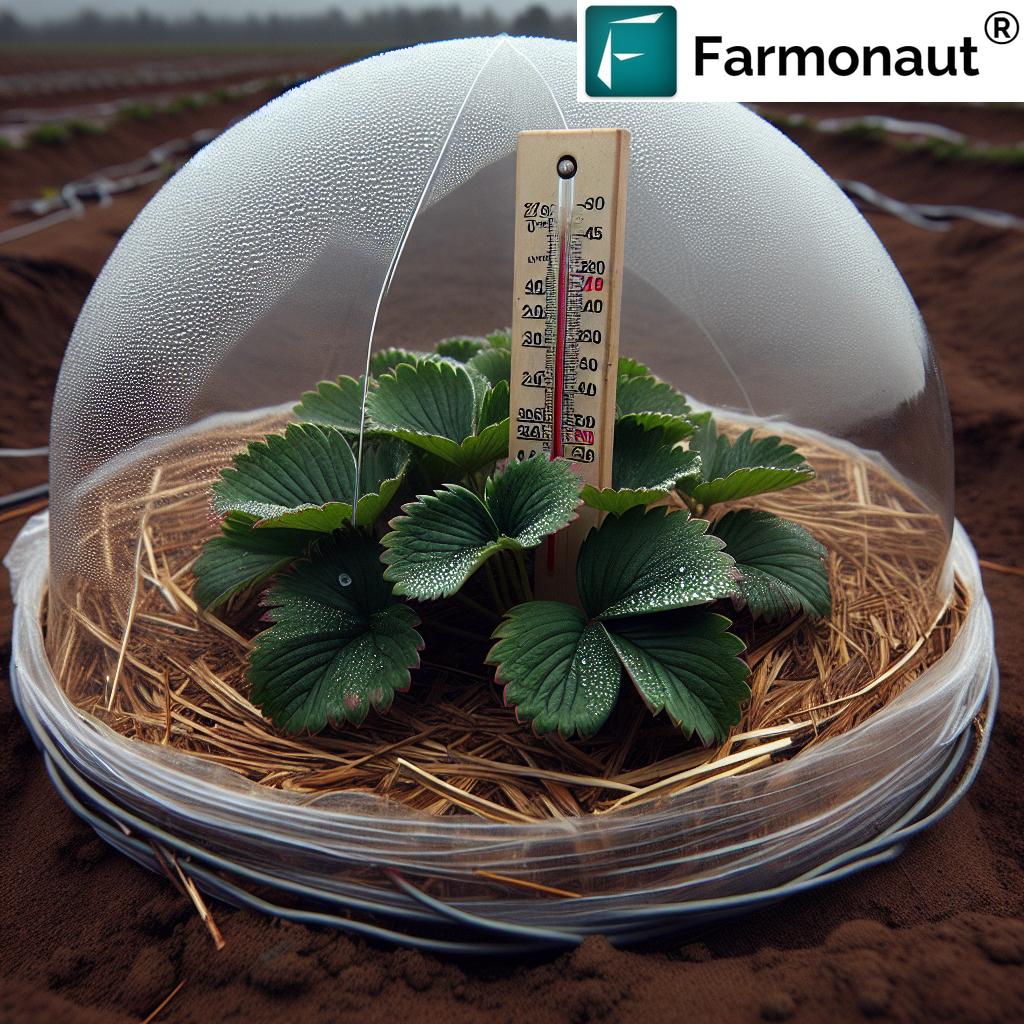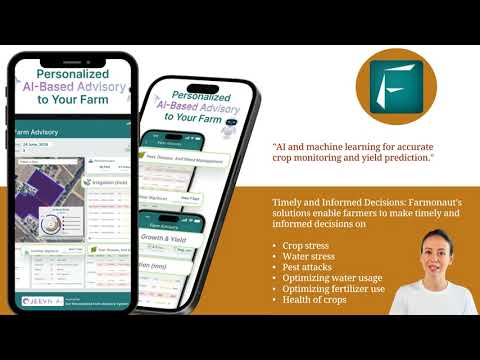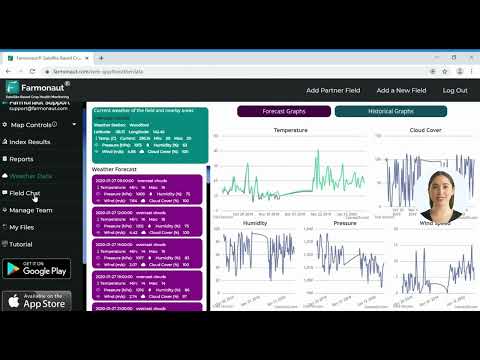Mastering Winter Crop Protection: Baton Rouge Farmers’ Resilient Strategies for Strawberry Survival in Freezing Weather
“Baton Rouge farmers use multiple layers of cover to protect strawberry crops, increasing survival rates by up to 80% during freezes.”
As we delve into the world of winter crop protection, we find ourselves in the heart of Baton Rouge, Louisiana, where local farmers are showcasing their resilience and ingenuity in safeguarding their precious strawberry crops against the harsh winter elements. In this comprehensive guide, we’ll explore the innovative strategies employed by these dedicated farmers to ensure their berries not only survive but thrive in freezing temperatures.
Understanding the Challenge: Protecting Crops from Cold Weather
Protecting crops from cold weather is a crucial challenge that farmers face, especially when it comes to winter crop protection. In Baton Rouge, LA, the stakes are particularly high for strawberry farmers, as these delicate fruits are susceptible to frost damage. The unpredictable nature of winter weather in this region demands a proactive approach to crop protection.
Let’s break down the primary challenges faced by Baton Rouge farmers:
- Sudden temperature drops
- Extended periods of freezing temperatures
- Frost accumulation on plants
- Soil freezing, which can damage roots
- Wind chill factors that exacerbate cold conditions
To combat these challenges, farmers have developed a suite of strawberry farming techniques specifically tailored to winter crop protection. These methods not only ensure the survival of the plants but also contribute to maintaining the quality and yield of the strawberry harvest season.
The Resilience of Cold-Resistant Strawberry Plants
One of the cornerstones of successful winter strawberry farming in Baton Rouge is the use of cold-resistant strawberry plants. These varieties have been carefully selected and bred to withstand lower temperatures than their more delicate counterparts. But what makes these plants so resilient?
- Genetic adaptations that allow for better cold tolerance
- Improved cellular structure that resists ice crystal formation
- Enhanced ability to produce natural antifreeze compounds
- Quicker recovery from frost exposure
By utilizing these cold-resistant varieties, Baton Rouge farmers lay a strong foundation for their crop resilience strategies. However, even these hardy plants require additional protection when temperatures plummet to extreme lows.
Innovative Techniques for Preparing Farms for Freezing Temperatures
Preparing farms for freezing temperatures is a multi-faceted process that begins long before the first frost warning. Let’s explore some of the innovative techniques employed by Baton Rouge farmers to safeguard their strawberry crops:
1. Strategic Planting Timing
Farmers carefully time their planting to ensure that strawberry plants are well-established before the onset of cold weather. This typically involves planting in early fall, allowing roots to develop and strengthen before winter arrives.
2. Soil Preparation and Mulching
Proper soil preparation is crucial for winter crop protection. Farmers enrich the soil with organic matter to improve drainage and insulation. Additionally, they apply a layer of mulch around the plants, which serves several purposes:
- Insulates the soil, protecting roots from freezing
- Retains moisture in the soil
- Suppresses weed growth, reducing competition for nutrients
3. Raised Bed Systems
Many Baton Rouge farmers utilize raised bed systems for their strawberry crops. These elevated planting areas offer several advantages:
- Improved drainage, preventing waterlogging during winter rains
- Warmer soil temperatures due to increased sun exposure
- Easier application of protective covers
4. Installation of Wind Breaks
Strategic placement of windbreaks helps to mitigate the chilling effects of winter winds. These can be in the form of:
- Natural barriers like tree lines or hedges
- Artificial windbreaks made from materials like fabric or plastic
By implementing these preparatory measures, farmers significantly increase the chances of their strawberry crops surviving the winter months. However, the real test comes when freezing temperatures are imminent, requiring immediate action to protect the vulnerable plants.
The Multi-Layer Approach: Shielding Berries from Harsh Winter Conditions
When it comes to fruit crop freeze protection, Baton Rouge farmers have mastered the art of using multiple layers of cover to safeguard their strawberries. This technique is a cornerstone of their winter crop protection strategy and has proven highly effective in maintaining crop resilience.
Let’s break down the multi-layer approach:
1. Row Covers
The first line of defense is typically a lightweight row cover. These are made from materials like spunbonded polypropylene and offer several benefits:
- Traps heat around the plants
- Allows light and water to penetrate
- Protects against light frost
2. Heavier Frost Blankets
For more severe cold snaps, farmers add a second layer of heavier frost blankets. These provide:
- Additional insulation
- Protection against temperatures as low as 24°F (-4°C)
- A barrier against ice and snow accumulation
3. Plastic Sheeting
In extreme cases, a third layer of clear plastic sheeting may be employed. This creates a greenhouse-like effect, offering:
- Maximum heat retention
- A waterproof barrier
- Protection against the most severe freezes
The effectiveness of this multi-layer system is remarkable. As one local farmer, Darryl Poche, explains, “I have two layers of cover, typically our first layer of cover will protect our crop down to 28°, and below that then we put a second layer on, that’s usually good until about 24° and after that, it’s a tossup if it does good or not.”

This multi-layer approach is a testament to the ingenuity of Baton Rouge farmers in developing effective strawberry farming techniques for winter crop protection. It’s a labor-intensive process, requiring careful monitoring and timely application, but the results speak for themselves in terms of crop survival and quality.
Leveraging Technology for Enhanced Crop Protection
While traditional methods form the backbone of winter crop protection strategies, modern technology is increasingly playing a crucial role in helping farmers safeguard their strawberry crops. One such technological advancement comes from Farmonaut, a pioneering agricultural technology company that offers advanced, satellite-based farm management solutions.
Farmonaut’s platform provides valuable services such as:
- Real-time crop health monitoring
- AI-based advisory systems
- Resource management tools
These tools can be particularly beneficial for Baton Rouge strawberry farmers in their winter crop protection efforts. For instance, the satellite-based crop health monitoring can help farmers identify areas of their fields that may be more susceptible to cold damage, allowing for targeted protection measures.
To explore how Farmonaut’s technology can enhance your farm management strategies, consider checking out their services:
The Impact of Extreme Weather on the Strawberry Harvest Season
While Baton Rouge farmers have developed robust strategies for winter crop protection, extreme weather events can still have a significant impact on the strawberry harvest season. Understanding these impacts is crucial for farmers to adapt their practices and maintain crop resilience.
Delayed Harvest
One of the most common effects of severe winter weather is a delayed harvest. As Darryl Poche notes, “I’ve had times where I didn’t pick a berry until the middle of March because we had cold weather.” This delay can have several implications:
- Shortened overall harvest season
- Potential overlap with other regions’ harvest times, affecting market prices
- Increased pressure to maximize yield in a shorter timeframe
Reduced Yield
While cold-resistant strawberry plants and protective measures significantly mitigate damage, extreme cold can still lead to reduced yields. This can occur due to:
- Frost damage to flowers and developing fruit
- Stunted plant growth during critical development periods
- Increased susceptibility to diseases in stressed plants
Quality Concerns
Even when berries survive the cold, there can be impacts on fruit quality, such as:
- Smaller berry size
- Altered flavor profiles
- Cosmetic blemishes that may affect marketability
Despite these challenges, the resilience of Baton Rouge farmers shines through. As Poche reassures, “To say that we get weather like this early, it doesn’t mean that we’re going to lose the whole crop, we will come out in the middle of March or so and will start producing and will produce until the middle of May.”
Adapting to Climate Challenges: Lessons from Experienced Farmers
The ability to adapt to changing climate conditions is a hallmark of successful farmers, and Baton Rouge strawberry growers are no exception. Their experiences offer valuable insights into maintaining crop resilience in the face of unpredictable weather patterns.
Flexible Planting Schedules
Experienced farmers have learned to adjust their planting schedules based on long-term weather forecasts and historical data. This flexibility allows them to:
- Avoid the most vulnerable growth stages during peak freeze periods
- Extend the growing season when conditions are favorable
- Stagger plantings to spread risk across different maturity stages
Diversification of Varieties
Many farmers are experimenting with a mix of strawberry varieties, each with different cold tolerance levels. This strategy helps to:
- Spread risk across different plant types
- Extend the overall harvest season
- Cater to diverse market preferences
Investment in Infrastructure
Forward-thinking farmers are investing in infrastructure improvements to better protect their crops. This includes:
- High-quality, reusable covering materials
- Automated covering systems for rapid deployment
- Improved drainage systems to manage excess moisture
These adaptations demonstrate the innovative spirit of Baton Rouge farmers and their commitment to sustainable strawberry production, even in the face of challenging weather conditions.
Beyond Freezing: Other Louisiana Farming Challenges
While winter crop protection is a significant concern for Baton Rouge strawberry farmers, it’s just one of many challenges faced by the Louisiana farming community. Let’s explore some of the other issues that require resilience and innovative solutions:
Flood Protection
Louisiana’s low-lying topography and proximity to the Gulf of Mexico make flooding a perennial concern. Farmers must contend with:
- Seasonal flooding from heavy rains
- Storm surge during hurricanes
- Rising water tables due to climate change
To address these challenges, farmers implement strategies such as:
- Elevated planting beds
- Improved drainage systems
- Flood-resistant crop varieties
Pest and Disease Management
The warm, humid climate of Louisiana creates ideal conditions for pests and diseases. Strawberry farmers must be vigilant against:
- Fungal diseases like Botrytis fruit rot
- Insect pests such as spider mites and thrips
- Soil-borne pathogens
Integrated pest management (IPM) strategies are crucial, combining biological controls, targeted pesticide use, and cultural practices to maintain healthy crops.
Soil Health and Fertility
Maintaining soil health is an ongoing challenge, especially in intensive strawberry production systems. Farmers focus on:
- Crop rotation to prevent nutrient depletion
- Cover cropping to improve soil structure
- Balanced fertilization programs
These practices not only ensure healthy plants but also contribute to the long-term sustainability of the farm.
The Economic Impact of Successful Winter Crop Protection
The efforts of Baton Rouge farmers in mastering winter crop protection techniques have significant economic implications, not just for individual farms but for the entire local agricultural sector.
Extended Market Presence
By successfully protecting their crops through the winter, farmers can:
- Extend their market presence into early spring
- Capitalize on higher prices for early-season berries
- Maintain consistent supply relationships with buyers
Job Stability
Successful winter crop protection means:
- More stable employment for farm workers
- Extended seasonal work opportunities
- Support for related industries (e.g., packaging, transportation)
Community Economic Benefits
The ripple effects of a successful strawberry season include:
- Increased local spending by farmers and farm workers
- Support for agritourism activities
- Preservation of agricultural land and rural character
These economic benefits underscore the importance of effective winter crop protection strategies in maintaining the viability of strawberry farming in Baton Rouge.

“Louisiana strawberry farmers can extend their harvest season by 3-4 weeks using advanced cold-resistant plant varieties and protection techniques.”
Comparative Analysis of Winter Crop Protection Strategies
To provide a clear overview of the various winter crop protection methods used by Baton Rouge farmers for strawberries, we’ve compiled a comparative analysis table:
| Protection Strategy | Effectiveness | Cost | Implementation Difficulty |
|---|---|---|---|
| Multiple Layer Covering | High | Medium | Medium |
| Cold-Resistant Varieties | Medium | Low | Low |
| Raised Bed Planting | Medium | Medium | Medium |
| Overhead Irrigation for Frost Protection | High | High | High |
This table helps illustrate the trade-offs farmers must consider when choosing their winter crop protection strategies. While multiple layer covering offers high effectiveness, it comes with medium costs and implementation difficulties. On the other hand, using cold-resistant varieties is easier to implement and less costly, but may not provide the same level of protection in extreme conditions.
The Role of Technology in Modern Strawberry Farming
As we’ve seen, traditional methods of winter crop protection are highly effective, but modern technology is increasingly playing a crucial role in enhancing these practices. Farmonaut’s satellite-based farm management solutions offer valuable tools for strawberry farmers looking to optimize their crop protection strategies.
Some key benefits of integrating technology into strawberry farming include:
- Precise monitoring of crop health and stress levels
- Early detection of potential issues, allowing for proactive measures
- Data-driven decision making for resource allocation
- Improved forecasting of weather impacts on crops
For farmers interested in exploring these technological solutions, Farmonaut offers several access points:
- API Access: For those looking to integrate Farmonaut’s data into their existing systems, the API provides a flexible solution.
- Developer Documentation: Detailed information on how to use Farmonaut’s API can be found in the API Developer Docs.
By leveraging these technological tools, Baton Rouge strawberry farmers can enhance their winter crop protection strategies and improve overall farm management.
Community and Knowledge Sharing Among Farmers
One of the strengths of the Baton Rouge farming community is the willingness to share knowledge and experiences. This collaborative approach has been instrumental in developing and refining winter crop protection strategies for strawberries.
Farmer Cooperatives and Associations
Many local farmers are members of cooperatives or associations that facilitate:
- Regular meetings to discuss challenges and solutions
- Workshops on new farming techniques
- Collective purchasing power for supplies and equipment
Mentorship Programs
Experienced farmers often mentor newcomers, sharing:
- Time-tested strategies for crop protection
- Insights on local climate patterns
- Tips for navigating the unique challenges of strawberry farming in Louisiana
Collaboration with Research Institutions
Many Baton Rouge farmers work closely with agricultural research institutions, contributing to:
- Field trials of new strawberry varieties
- Testing of innovative crop protection methods
- Development of best practices for sustainable farming
This culture of knowledge sharing and collaboration enhances the resilience of the entire farming community, ensuring that innovative solutions and best practices are widely disseminated.
Looking to the Future: Sustainable Strawberry Farming in Baton Rouge
As we look ahead, it’s clear that the future of strawberry farming in Baton Rouge will be shaped by a combination of traditional wisdom and cutting-edge innovation. The resilience demonstrated by local farmers in the face of winter challenges sets a strong foundation for sustainable agriculture practices.
Embracing Climate-Smart Agriculture
Moving forward, we can expect to see an increased focus on climate-smart agricultural practices, including:
- Water-efficient irrigation systems
- Carbon sequestration through improved soil management
- Renewable energy adoption on farms
Technological Integration
The integration of technology in farming operations is likely to accelerate, with tools like Farmonaut’s platform playing an increasingly important role in:
- Precision agriculture techniques
- Automated monitoring and alert systems
- Data-driven decision making for crop management
Diversification and Value-Added Products
To enhance economic resilience, many farmers are exploring:
- Diversification into complementary crops
- Development of value-added strawberry products
- Agritourism opportunities to supplement farm income
These forward-looking strategies, combined with the proven resilience of Baton Rouge farmers, paint a promising picture for the future of strawberry farming in the region.
Conclusion: The Resilient Spirit of Baton Rouge Strawberry Farmers
As we’ve explored throughout this article, the success of Baton Rouge strawberry farmers in mastering winter crop protection is a testament to their resilience, innovation, and deep understanding of their craft. From the use of cold-resistant strawberry plants to the implementation of multi-layer covering techniques, these farmers have developed a robust set of strategies to ensure their crops not only survive but thrive in challenging winter conditions.
The impact of their efforts extends far beyond individual farms, contributing to the economic vitality of the region and preserving a cherished agricultural tradition. As climate challenges continue to evolve, the adaptability and determination demonstrated by these farmers provide a model for sustainable agriculture in the face of uncertainty.
For those interested in supporting local agriculture or learning more about innovative farming techniques, consider exploring the resources and tools offered by companies like Farmonaut. Their technology-driven approach to farm management complements the traditional wisdom of experienced farmers, pointing the way towards a future where agriculture is both resilient and sustainable.
As we look to the future, it’s clear that the spirit of innovation and community that characterizes Baton Rouge strawberry farming will continue to drive success, ensuring that this beloved crop remains a staple of Louisiana agriculture for generations to come.
FAQ Section
Q: What are the main challenges faced by Baton Rouge strawberry farmers in winter?
A: The main challenges include sudden temperature drops, extended periods of freezing temperatures, frost accumulation on plants, soil freezing, and wind chill factors that exacerbate cold conditions.
Q: How effective is the multi-layer covering approach for protecting strawberries?
A: The multi-layer covering approach is highly effective, protecting crops down to temperatures as low as 24°F (-4°C) when properly implemented.
Q: Can strawberry crops be completely lost due to winter weather?
A: While severe weather can cause significant damage, experienced farmers like Darryl Poche note that complete crop loss is rare. With proper protection measures, strawberry plants are quite resilient.
Q: How does technology like Farmonaut’s platform help in winter crop protection?
A: Farmonaut’s platform offers real-time crop health monitoring, AI-based advisory systems, and resource management tools that can help farmers identify vulnerable areas and make informed decisions about crop protection strategies.
Q: What are some long-term strategies for improving strawberry crop resilience?
A: Long-term strategies include using cold-resistant varieties, implementing climate-smart agricultural practices, diversifying crops, and investing in infrastructure improvements like automated covering systems and improved drainage.
Earn With Farmonaut: Affiliate Program
Earn 20% recurring commission with Farmonaut’s affiliate program by sharing your promo code and helping farmers save 10%. Onboard 10 Elite farmers monthly to earn a minimum of $148,000 annually—start now and grow your income!






